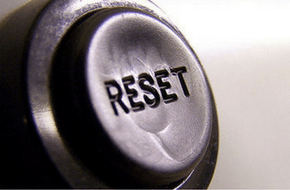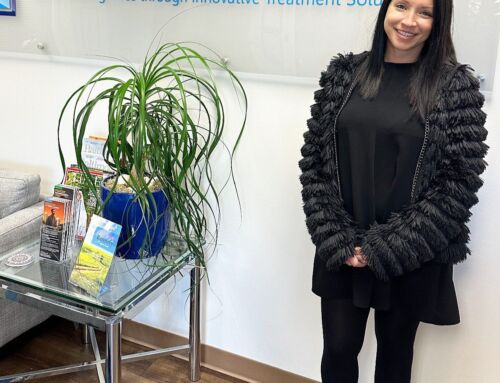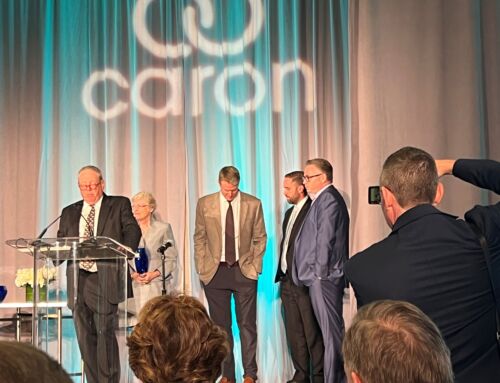Why 90 Days of Addiction Treatment Needs to be the New Minimum of Care for Patients in Order to Improve Long-Term Recovery Outcomes
Several months ago we published a blog titled “We Have Been Treating Addiction Incorrectly in America for Many Years” where we discussed the 28 and 30 day model of residential treatment and how the way in which society views treatment for addiction needs to change. In that blog we highlighted how although for many years the standard of care for addiction treatment has been a 28 or 30 day residential model of inpatient treatment, that specific model was never clinically-driven. What that means is that the model of one month of rehab in a residential setting was never created because it was the best clinical model to treat the disease of addiction. It was created and became the standard of care for several reasons and continues to hold value if used in a comprehensive continuum of care, but as a stand-alone treatment for addiction (when not used in a continuum with less intensive levels of care following a 30 day stay) it is not a clinically appropriate model. We received some push back and negative responses and again it’s important to reiterate that a 30 day residential model of impatient treatment has significant value and can be especially important in a continuum of care, but it has unfortunately become the standard of care by which society views addiction treatment. A 30 day model of treatment is treating a progressive, chronic disease with an acute model and that is absolutely incorrect, not clinically-appropriate and in fact can actually hinder long-term recovery outcomes.
Why is this the case? Because patients suffering from addiction typically will fight tooth and nail against treatment. It is the nature of the disease of addiction to deny having a problem and then when backed into a corner, accept the treatment that interferes the least in the person’s life. Often, only when backed into a corner will a person admit they have an issue with drugs and alcohol and accept that they need to seek help in the form of rehab or treatment in order to solve the problem. Additionally, even when seeking treatment, patients will present as many barriers as they can between themselves and treatment. Patients will put conditions on their treatment: the length of time of treatment, the types of treatment, the location of treatment, etc. It is again the nature of the disease that a patient in addiction treatment (as in life) will always choose the easiest, softest way where they need to invest as little effort and that offers the least discomfort to them as possible. So it often takes a lot for a family or loved ones to talk a person into “going away” for 30 days of treatment, much less having them agree to any treatment that is longer term. Society has adopted this idea that “addiction treatment” is a 30 day residential model; that treatment begins when a patient enters a 30 day rehab and ends when they discharge and come back home. That type of thinking is absolutely setting people up for failure. And with addiction, failure often means death. Patients kick and scream that they need to “get back to their lives,” that they have responsibilities they need to return to and families and jobs they need to get back to immediately. Often this happens after a short term rehab stay and then the relapse rates continue to increase, the overdose deaths increase and the long-term recovery outcomes and statistics continue to be poor.
What needs to happen? First, those suffering from addiction, their families, mental health and addiction professionals and society as a whole need to throw out the concept that addiction treatment equates to a 30 day residential level of care. We as a society need to understand that if we are going to overcome this horrific addiction epidemic that we find ourselves in, we need to start by looking at what the standard of care for addiction treatment looks like currently, what it SHOULD look like to set every patient up for success and what patients and families should come to expect when a loved one enters treatment. The immediate answer is that we need to look at long-term addiction treatment as the standard of care for anyone receiving professional help in overcoming their addiction. This means, AT MINIMUM, a patient needs to be in 90 days of addiction treatment and the IDEAL situation of long-term treatment should be a transitional model of treatment that takes place for a person’s first year of recovery. What the looks like is a patient transitioning through levels of care from inpatient detox, stabilization, 30-45 days of residential rehab, 90 days to 9 months of extended care treatment and then outpatient treatment, aftercare groups and individual therapy. Throughout this process a patient would be receiving vital life skills training and slowly transitioning from full treatment in a clinical setting to partial treatment with an incorporation of either vocational work or higher education. This true continuum would allow for a patient to deal with all of the issues they would encounter in early recovery within a safe, clinical setting and set them up so that at the end of their first year they are fully self-supporting, having become interdependent with their family, engaged within an outside recovery community and working at a job or back to school full time.
Now, if you ask a person calling into a rehab for help or the family members of a person suffering from a substance use disorder how they feel or think about such a long-term model, the typical responses would be: “That sounds great, but my loved one will never go for that” or “I can’t do that, I have a family/job/career/cat I need to get home for” or “I’ve already been to treatment before, I don’t need all that, I just need to get detoxed and get a little time away. I know what I need to do.” We receive these responses every day, multiple times a day from people that call in for help, and while it can be difficult to challenge those ideas, the truth is that if we took the easier, softer route and simply agreed with those statements, not only would we be lying to the patient through agreement but we would also be setting up that person to fail. We believe it is our job to tell those seeking addiction treatment what is the best possible treatment for them to overcome their addiction, which means comprehensive, long-term treatment in a transitional model of care.
But why is that the best option?
For years, we have known that longer term addiction treatment equals better results. The longer someone is engaged with a treatment program, the better the recovery outcomes tend to be overall. In Volume 14, Number 5 (December, 1999), The National Institute of Drug Abuse (NIDA) issued the statement “For most patients, the threshold of significant improvement is reached at about 3 months in treatment. Additional treatment can produce further progress. Programs should include strategies to prevent patients from leaving treatment prematurely.” NIDA also referred to addiction treatment programs and rehabs that offered a “true” 90 day program as what should be the new “gold standard” in the treatment of substance use disorders. There it is in nutshell: 90 days of addiction treatment is needed to see significant improvement and treatment that lasts longer actually shows better results. A traditional 30 day model of treatment in of itself it not enough. Why? Because it simply isn’t enough time. Every addict or alcoholic that steps into treatment suffers from more than just drug addiction, they suffer from a myriad of other issues that can include trauma, self-esteem and self-worth, family or origin and family dynamics issues and co-occurring disorders like bi-polar disorder, depression, anxiety, OCD and ADHD. Some suffer from personality disorders and many from more extreme psychiatric conditions. Many patients suffer from many of these at once. Does 30 days sound like enough time to treat all these issues and then send someone home, back to their life and family and job? Often, the first 10-14 days of a residential rehab are taken simply to detox and stabilize a patient, leaving at most 14-16 says to identify and treat core issues and give patients the tools to go home and live a lifetime of happy sobriety. Sound almost impossible? And yet for years there have been people screaming from the rafters, chastising the addiction treatment industry for poor recovery outcomes, high relapse rates and the ever simply and popular “treatment just doesn’t work!” Well, no it doesn’t when it’s not the correct treatment. If a specific type of cancer that requires 3 months of chemotherapy and radiation (along with a number of lifestyle and dietary changes) and 6 months of follow up doctor visits was only treated with 28 days of chemo, would we be saying that cancer treatment doesn’t work or would we be screaming from the rafters that we need to use the correct, most appropriate treatment protocol. Addiction treatment absolutely works but we need to be using the correct, most appropriate treatment protocols.
Finally, there is adequate research of the brain that supports and works in conjunction with the idea that 90 days of treatment needs to be the absolute minimum amount of time a patient needs to be engaged in treatment. Numerous studies have shown how long-term drug use and abuse can change the chemistry of the brain over time. Obviously the effect can be different based on the individual, the drugs they ingest and the amount of time they’ve been using, but there is little doubt that drug use negatively impacts the brain of an addict. And while most substances can be metabolized in a matter of days and out of a patient’s system during an acute detox, the long-term impact of substances on the brain requires a long-term treatment regimen to bring the patient back into a state of health. Some researchers actually believe that it takes up to two full years for certain areas of the brain to heal that have been damaged by chemicals. Finally, researchers at Yale University have coined the phrase the “sleeper effect”, which is a term they use for the 90-10 day period during which the brain’s functions regulating decision-making and analytics needs in order to recover. The overall thought is that, again, it takes 90 days for the brain impacted by addiction to be free of the impact of substances and reset itself into a state of recovery.
In short, recovery from addiction takes time and in order to set a patient up for a successful recovery, we need to be offering them the proper long-term treatment the supports long-term sobriety. A patient’s brain needs to heel, long-term learned behaviors and pathologies needs to be identified and overcome. Family dynamics need to be examines and restructured. Underlying core issues and trauma need to be dealt with and in an ethical manner, meaning in a long-term, clinically safe environment. As an industry, we cannot begin to open up patient’s trauma and then send them on their way to another treatment setting or provider because their insurance benefits have run out. In addiction treatment, recovery takes time and time is our friend. Patients need to trust their providers, to engage in the treatment process, to be allowed to fight and cry and scream and process and heal. All of this cannot be done in 30 days. Addicts, parents, families, therapist, the addiction treatment industry and society as a whole need to being to understand that in order to individually overcome addiction, and to being to overcome the nationwide addiction epidemic that we now face, we need to begin to look at how we treat addiction differently and begin to understand that there are no short term fixes to addiction. Whether it is a single long-term rehab or a comprehensive continuum of care that spans several treatment providers working in partnership, there can no longer be any argument that we need to begin treating a chronic, progressive disease with a comprehensive, long-term model of treatment. At minimum, 90 days needs to become the standard of care that a patient goes to addiction treatment. Ideally, a patient will engage in treatment for the entire first year of their recovery. We begin practicing addiction treatment in this manner, there is no doubt the recovery outcomes rise exponentially.
If you or someone you know is in need of help because of drug and/or alcohol abuse or addiction, please give us a call. Maryland Addiction Recovery Center offers the most comprehensive dual diagnosis addiction treatment in the Baltimore, Maryland, Washington, DC and Virginia area. If we aren’t the best fit for you or your loved one, we will take the necessary time to work with you to find a treatment center or provider that better fits your needs. Please give us a call at (410) 773-0500 or email our team at Contact us today. For more information on all of our drug addiction and alcohol addiction services and recovery resources, please visit our web site at www.marylandaddictionrecovery.com.

Table of Contents





